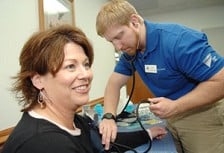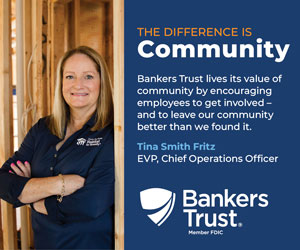Employee buy-in is key for wellness programs

.floatimg-left-hort { float:left; } .floatimg-left-caption-hort { float:left; margin-bottom:10px; width:300px; margin-right:10px; clear:left;} .floatimg-left-vert { float:left; margin-top:10px; margin-right:15px; width:200px;} .floatimg-left-caption-vert { float:left; margin-right:10px; margin-bottom:10px; font-size: 12px; width:200px;} .floatimg-right-hort { float:right; margin-top:10px; margin-left:10px; margin-bottom:10px; width: 300px;} .floatimg-right-caption-hort { float:left; margin-right:10px; margin-bottom:10px; width: 300px; font-size: 12px; } .floatimg-right-vert { float:right; margin-top:10px; margin-left:10px; margin-bottom:10px; width: 200px;} .floatimg-right-caption-vert { float:left; margin-right:10px; margin-bottom:10px; width: 200px; font-size: 12px; } .floatimgright-sidebar { float:right; margin-top:10px; margin-left:10px; margin-bottom:10px; width: 200px; border-top-style: double; border-top-color: black; border-bottom-style: double; border-bottom-color: black;} .floatimgright-sidebar p { line-height: 115%; text-indent: 10px; } .floatimgright-sidebar h4 { font-variant:small-caps; } .pullquote { float:right; margin-top:10px; margin-left:10px; margin-bottom:10px; width: 150px; background: url(http://www.dmbusinessdaily.com/DAILY/editorial/extras/closequote.gif) no-repeat bottom right !important ; line-height: 150%; font-size: 125%; border-top: 1px solid; border-bottom: 1px solid;} .floatvidleft { float:left; margin-bottom:10px; width:325px; margin-right:10px; clear:left;} .floatvidright { float:right; margin-bottom:10px; width:325px; margin-right:10px; clear:left;}
All right, your company has established an employee wellness program. But how well are you and your co-workers using it?
With encouragement from the top and the right monetary incentives, some Central Iowa employers are getting the majority of their workers involved.
Iowa Network Services Inc., for instance, knocks $500 off the annual employee contribution to the company’s health plan for each employee who participates in an annual health screening. Last week, 195 of the company’s 200 employees took part in the screenings, which provide participants with key health numbers, such as their cholesterol readings, blood sugar levels and blood pressure.
“We have actually been doing health screenings on and off for the past 10 years,” said Paige Peterson, Iowa Network Services’ human resources director. “But we’ve gotten really serious about it in the past couple of years because our health premiums have gotten out of hand. We want to nip (health problems) in the bud before they get too big. And it’s for the overall benefit of the employees; healthy employees work better.”
Though some companies are seeing immediate savings, others are finding that reducing health-care costs can require as much patience as trimming one’s waistline.
Peterson said it’s too early to assess the extent to which the wellness program may reduce her company’s health premiums, but she has seen it encourage several employees to quit smoking or start exercise programs.
“One guy was so upset by his ‘lifestyle age’ that he started exercising, stopped smoking and dropped his ‘age’ quite a bit,” she said.
Getting as many employees as possible involved with wellness programs through education is a vital step in realizing cost savings through the programs, say insurance brokers that offer them.
“What insurance companies have done in the past is implement case management programs, but someone had to have claims before they were implemented,” said Lori Wiederen, a senior vice president and co-national practice leader with Holmes Murphy & Associates Inc. “So we engage the people we consider ‘healthy at-risk,’ those who have three or more out of five risk factors.”
Holmes Murphy has found that offering premium discounts as an incentive to participate (and as a disincentive to stay on the sidelines) is the most effective means for encouraging high levels of participation.
“We found that it can’t be voluntary, because you might only get 40 to 60 percent participation and you’re not even touching the people who really need the program,” she said. “So we’ve found it’s really a waste of employers’ money if they’re not going to put some teeth in it.” Premium incentives can typically boost participation to 90 percent or higher, Wiederen said.
Additionally, success comes from building wellness programs that are customized to each employee’s interests, said Jim Underfer Jr., an employee benefits specialist with TrueNorth Cos.
Coaching and education
“It all starts, in my opinion, in the home,” he said. “You have to engage the employee and the spouse in the wellness program in order to get any kind of overall cost savings in the end.”
TrueNorth launched a health coaching program three years ago in partnership with Health Solutions Inc. of Cedar Rapids, and now offers the program to every employer group it contacts. Participants receive a full health screening conducted by a nurse. Each employee is assigned a health coach who works one-on-one with the employee and his or her spouse to develop and maintain a weekly schedule of activities tailored to what they enjoy doing. The coaching extends to developing a more healthful diet for the family, which the participants document, along with their exercise activities, in a journal they review with the coach.
Participants are assigned to one of five risk groups, based on the results of their health screenings, Underfer said. “Obviously, the higher the risk, the more attention that employee is going to receive from the coach, in terms of how often he or she meets with the coach, how detailed the journal must be,” he said.
Making the case to employees about “what’s in it for them” is crucial, Underfer said.
“You’ve got to break it down to their level, and that usually comes down to dollars,” he said. “When they can see that if I decide to eat healthy and start making some right decisions at home, then that affects my health-care costs.”
Holmes Murphy offers a 10-week educational program through Principal Wellness Co. that targets employees identified through a wellness screening as being at high risk for developing heart disease, diabetes or other lifestyle-related illnesses.
“It’s really teaching them lifestyle changes they can incorporate into their lives,” such as healthier eating habits, Wiederen said. Each employee must go through the screening to receive a $500 premium discount, and those identified as being at risk must attend at least eight out of the 10 classes to receive the discount. On average, between 40 and 55 percent of employees who went through the program were able to reduce the risk factors identified in the initial screening.
What’s the outcome?
Employers that actively promote their wellness programs report that they’re getting more benefits from those programs than more passive companies, according to a nationwide study by the American Heart Association.
That survey of nearly 3,000 employees, conducted by Harris Interactive, examined the role leadership plays in creating an atmosphere in which employees can feel free to actively take advantage of their company’s wellness program. Among the findings was that employees in companies that actively encourage participation in their wellness programs were enrolled in an average of four elements of the program, as compared with two for non-encouraging companies.
Those “encouraging” companies are still in the minority, however. Fewer than one in five (18 percent) of employees surveyed said their employer was encouraging participation “extremely well” or “very well.” Nearly one-third of employees said their organizations do not encourage participation well at all.
Companies shouldn’t expect to see immediate savings, though some do, Underfer said. Within a year of implementing a wellness program, for instance, TrueNorth reduced its own health premiums by 7 percent. One client with 280 employees implemented a wellness program after its premiums had increased by 27 percent; it was able to flatten its rate increase to zero after one year with a wellness program, and decreased premiums by 5 percent the following year, Underfer said.
“That’s not typical,” he said. “Usually, you won’t see a decrease in costs until after the first three years. And you may even see an increase in the first year because the people who are sick don’t know they’re sick until they get these screenings.”
Wiederen said a good question for employers to ask themselves or a potential program provider is: Is their wellness program creating clinical improvements? “That’s a great question for employers to ask their wellness vendor,” she said. “What data can they show that indicates measurable improvement?”
At Iowa Network Services, Peterson said she hopes to obtain some company funds to build more components into her company’s wellness program next year.
“What I’m excited about is that next year we may have money to bring a dietitian on-site to do some healthy cooking demonstrations,” she said.








